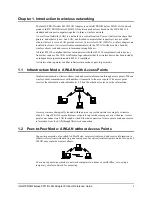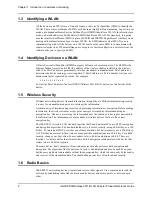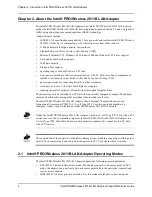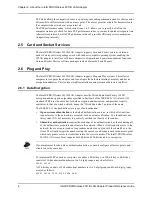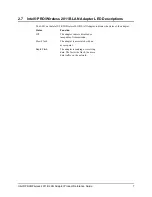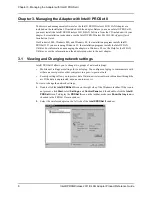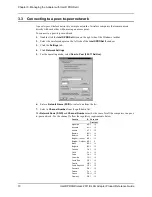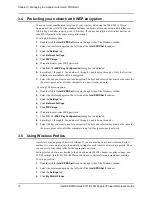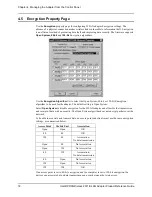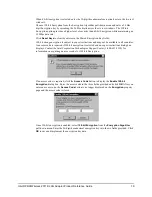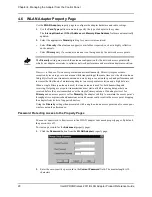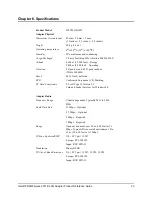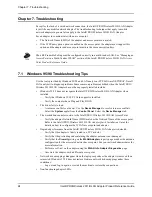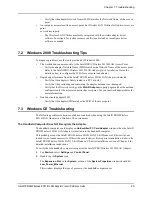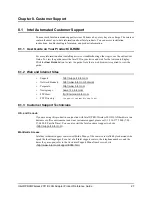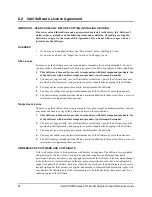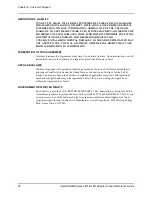
Intel® PRO/Wireless 2011B LAN Adapter Product Reference Guide
15
4.1
Mobile Unit Property Page
Use the
Mobile Unit
property page to configure the adapter operating mode and Network Name
(SSID).
Use the
Operating Mode
pull-down menu to select one of the following operating modes for the
adapter:
ESS (802.11 Station)
– Select
ESS (802.11 Station)
to enable the computer to transmit and receive
data with an access point. Infrastructure (ESS) is the computer default mode.
IBSS (802.11 Ad Hoc)
– Select
IBSS (802.11 Ad Hoc)
to enable computers to form their own local
network where computers communicate peer-to-peer without access points. Use Ad Hoc (IBSS) to
create networks where needed within established cells. In Ad Hoc, computers take turns generating
beacons and handling probe responses. The computer starting the Ad Hoc network (the first station
transmitting a beacon) determines the channel and data rate used for the Ad Hoc network.
Pseudo IBSS (Proprietary Ad Hoc)
– Select
Pseudo IBSS
when the highest throughput is
required in an Ad Hoc network for computer testing. Proprietary Ad Hoc (Pseudo IBSS) does not
support PSP computers and does not use beacons or authentication. In Proprietary Ad Hoc mode,
each computer is required to be on the same channel. Proprietary Ad Hoc is not recommended as a
normal operational mode or for computers operating on battery power.
Enter a Network Name (SSID) in the
802.11 ESSID
field using a maximum of 32 characters. You
can also enter the Network Name in the
Easy Setup
window. To communicate with an access
point, the Network Name must match the Network Name of the access point.
Use the
Mandatory AP addres
s field to enter the IEEE Media Access Control (MAC) address of
the access point with which the adapter is required to associate. The adapter associates to only this
access point when communicating on the network. Enter an access point MAC address to associate
to an access point that has a compatible Network Name.
Select
Send Long Preamble Headers
if the associated access point is using a long preamble when
transmitting. The preamble is approximately 8 bytes of packet header data generated by the access
point and attached to the packet prior to transmission. The access point and adapter are required to
use the same preamble length to interoperate. Ask your system administrator if you don’t know the
preamble length used by the access point.
Check the
International Roaming
check book to enable the adapter to roam and associate to access
points with different country codes.
4.2
Battery Usage Property Page
Use the Battery Usage property page to control adapter power consumption. The adapter has two
power consumption modes, Continuous Access Mode (CAM) and Power Save Poll (PSP) mode.
CAM yields the best performance but uses the most power. CAM is the preferred mode for systems
running on AC power. PSP saves significant amounts of power over CAM. PSP is the preferred
mode for systems running on battery power.
Set the slider to the far right to keep the adapter in CAM or set the slider to a PSP performance
index (1 to 5). Each mode is described underneath the sliding scale.
If you are running Windows 95, disable Power Management capabilities in WLAN Monitor to use
the settings on this property page.

